“The best time to plant a tree was 20 years ago. The second best time is now.” -Chinese Proverb
Slow-growing plants are perfect for beginners! They are easy to care for and don’t require much attention. Plus, they are great for adding a touch of green to your home.
Each of these plants is easy to care for and will thrive with just a little bit of love. Hence, if you’re looking for a low-maintenance plant to add to your home, consider one of these slow growers!
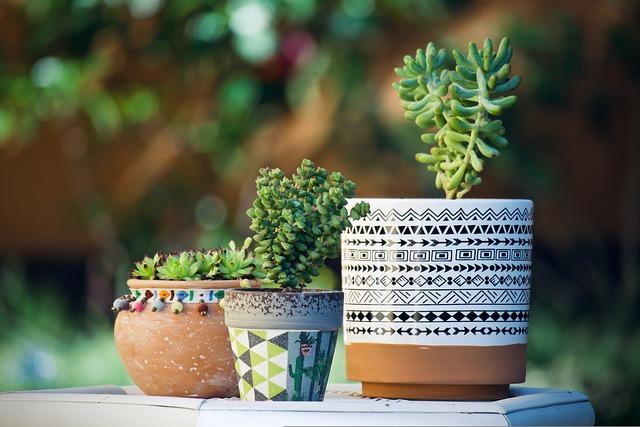
The Benefits Of Slow Growing Plants
Slow-growing plants have many benefits that make them ideal for beginner gardeners.
- The slow-growing plants are much easier to care for than the fast-growing plants.
- Slow growers are also less likely to outgrow their pots or containers, making them a great option for those who do not want to constantly repot their plants.
- Another benefit of slow growers is that they are much more tolerant of neglect than fast-growing plants. If you forget to water your slow grower for a week, it is not likely to die, whereas a fast-growing plant would likely succumb to thirst in that time.
- Slow growers also do not need as much fertilizer as fast-growing plants, so they are a more eco-friendly option.
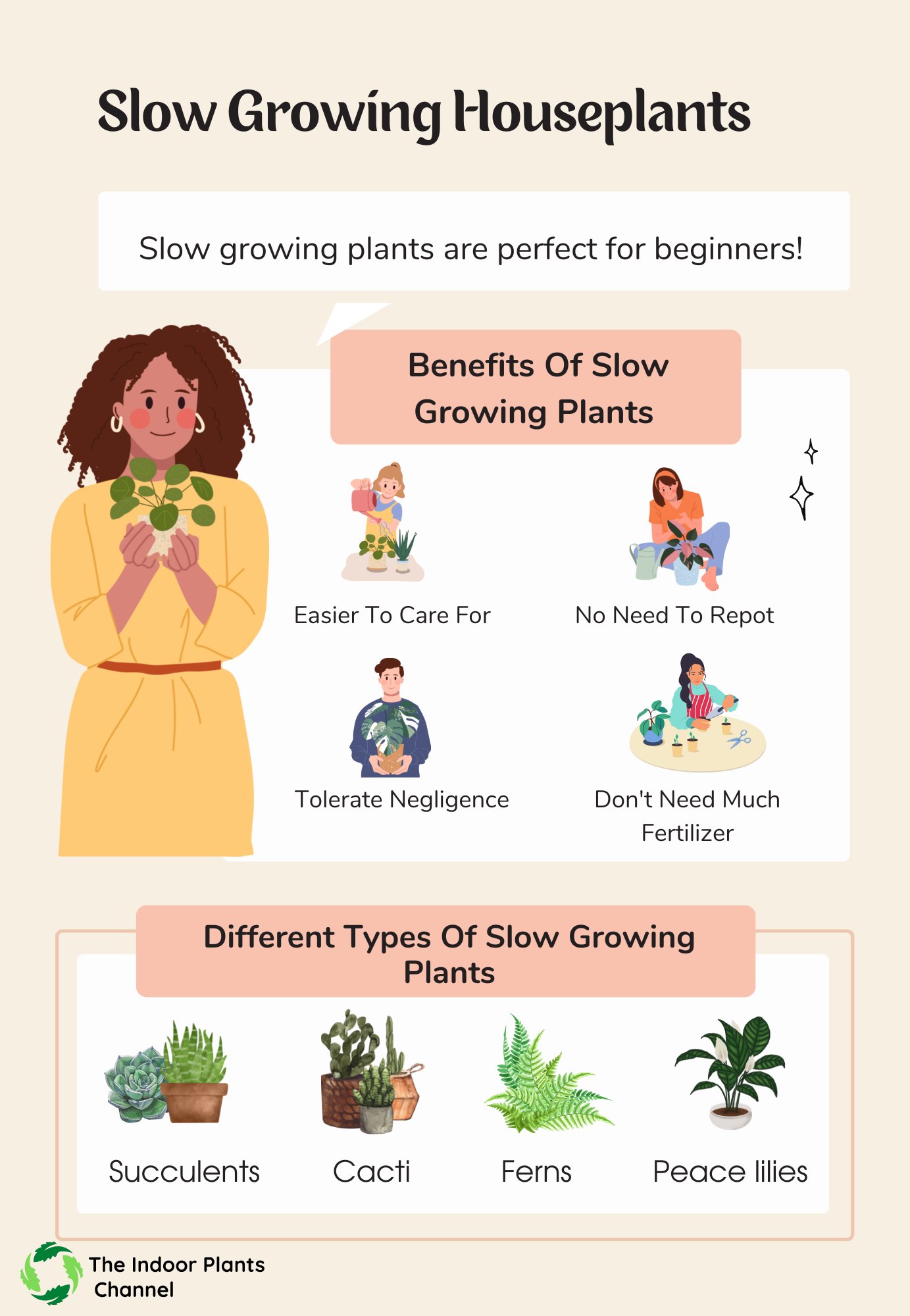
Different Types Of Slow Growing Plants For Beginners
There are many different types of slow-growing plants for beginners. Some of the most popular include succulents, cacti, ferns, and peace lilies.
- Succulents are a great option for beginners because they are very easy to care for. They don’t need a lot of water and can tolerate periods of drought. They also don’t need a lot of sunlight, so they’re perfect for indoor gardens.
- Cacti are another popular choice for beginners. Like succulents, they are very easy to care for and don’t need a lot of water. They also don’t need a lot of sunlight, but they can tolerate more than succulents.
- Ferns are a great choice for beginners because they are very easy to care for. They need a lot of humidity, so they’re perfect for bathrooms or kitchens. They also don’t need a lot of sunlight, so they’re perfect for indoor gardens.
- Peace lilies are a great choice for beginners because they are very easy to care for. They need a lot of humidity, so they’re perfect for bathrooms or kitchens. They also don’t need a lot of sunlight, so they’re perfect for indoor gardens.
The Best Slow Growing Plants For Beginners
If you’re new to gardening, you might be wondering what the best slow-growing plants are for beginners.
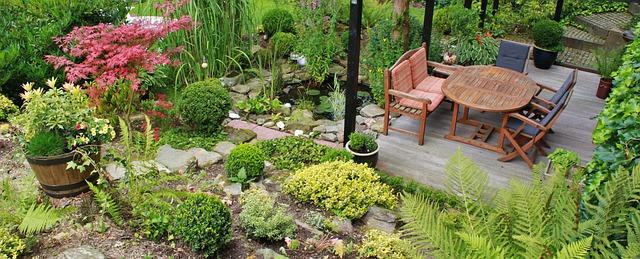
Here’s a list of some of the best options:
1. Snake Plant
Also known as the mother-in-law’s tongue, a snake plant is a great option for beginners because it’s very easy to care for. It’s a succulent, so it doesn’t need much water, and it can tolerate low light conditions.
2. ZZ Plant
The ZZ plant is another great option for beginners. It’s very tolerant of neglect, so if you forget to water it for a while, it won’t die. It can also tolerate low light conditions. The ZZ plant is also easy to propagate, so you can easily create more plants from a single one.
3. Spider Plant
A spider plant is a great option for beginners because it’s very easy to care for. It’s a fast grower, so it will quickly fill in any empty space in your garden. It’s also very tolerant of neglect.
4. Air Plant
Air plants are a great option for beginners because they don’t need any soil. They get all the nutrients they need from the air, so all you need to do is mist them occasionally. They can also tolerate low light conditions.
5. Bromeliads
Bromeliads are a great option for beginners because they’re very easy to care for. They don’t need much water, and they can tolerate low light conditions.
6. Ponytail Palm
The ponytail palm is a great plant for beginners because it is very slow growing. It can take years for this plant to reach its full size, so you don’t have to worry about it outgrowing its pot too quickly. Ponytail palms are also very tolerant of neglect.
7. Jade Plant
The jade plant is a great choice for beginners because it is very slow growing and very tolerant of neglect. It can thrive in low-light conditions and does not need a lot of water. The jade plant is also quite easy to propagate.
8. Aloe Vera
Aloe vera is a great choice for beginners because it can thrive in low-light conditions and does not need a lot of water.
9. Orchids
Orchids are a popular choice for indoor gardens, but they can be a bit more challenging to care for than some of the other plants on this list. They prefer bright, indirect light and need to be watered about once a week. They also need to be fertilized every other week.
10. Dracaenas
Dracaenas are a great choice for beginners because they are very tolerant of a wide range of conditions. They can tolerate low light levels and don’t need to be watered very often. They are also tolerant of drought, so you don’t have to worry about watering them too often.
How To Choose Slow Growing Plants For Your Home
There are a few things to consider when choosing slow-growing plants for your home.
- Think about the size of the space you have. If you have a small space, you’ll want to choose smaller plants.
- Consider the amount of light the space gets. If it’s a dark space, you’ll want to choose plants that don’t need a lot of light.
- Think about the temperature of the space. Some plants prefer cooler temperatures, while others prefer warmer temperatures.
- The humidity of the space. Some plants like it more humid, while others prefer it drier.
- The soil type. Some plants prefer well-drained soil, while others prefer soil that holds moisture. Keep these things in mind when choosing slow-growing plants for your home.
The Most Challenging Slow Growing Plants For Beginners
Slow-growing plants can be a challenge for beginners, especially if they are not used to caring for plants. However, with a little patience and care, these plants can be a beautiful addition to any home.
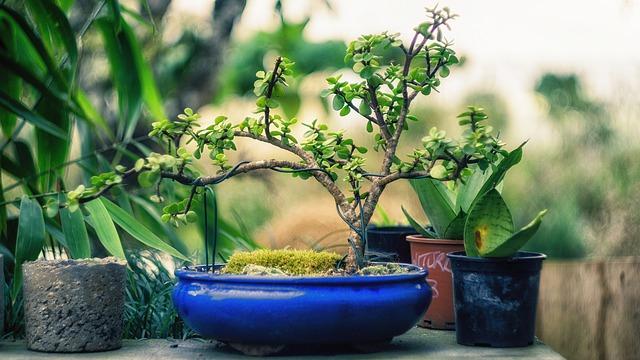
Here are some of the most challenging slow-growing plants for beginners:
1. Fiddle Leaf Fig
The Fiddle Leaf Fig is a popular plant that can be difficult to grow. It is a slow grower that requires a lot of attention. It is important to keep the soil moist and to provide the plant with plenty of sunlight.
2. Snake Plant
The Snake Plant is another slow grower that can be difficult to care for. It requires well-draining soil and plenty of sunlight. It is also important to keep the soil moist.
3. Bonsai Tree
Bonsai Trees are beautiful but can be challenging to grow. They require special care and attention. Bonsai Trees need to be pruned and shaped regularly. They also need to be watered regularly and kept in an area with lots of sunlight.
4. Orchids
Orchids are a popular plant that can be difficult to grow. They require a lot of attention and care. Orchids need to be watered regularly and kept in an area with lots of indirect sunlight.
5. Succulents
Succulents are a popular plant that can be difficult to grow. They require well-draining soil and plenty of sunlight. It is also important to water them regularly.
How To Care For Slow Growing Plants
If you’re a beginner gardener, you might want to start with slow-growing plants. These plants are easy to care for and don’t require a lot of attention.
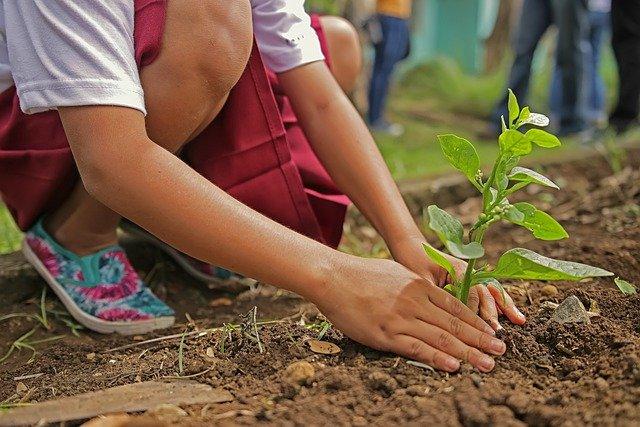
Here are some tips for caring for slow-growing plants:
- Water your plants regularly. Slow-growing plants need just as much water as other plants.
- Don’t over-fertilize. Slow-growing plants don’t need as much fertilizer as fast-growing plants.
- Be patient. Slow-growing plants will take longer to reach their full size. But they’re worth the wait!
Bonus Tips
- Use slow-growing plants for beginners as houseplants.
- Create a living wall with slow-growing plants for beginners.
- Plant slow-growing beginner plants in a container garden.
- Add slow-growing plant beginners to a garden bed.
- Use slow-growing plants for beginners as accent plants.
- Create a topiary with slow-growing plants for beginners.
Frequently Asked Questions
- What are some good slow-growing plants for beginners?
Some good slow-growing plants for beginners include the African violet, bamboo, and cactus.
- How do I care for slow-growing plants?
In general, slow-growing plants require less water and fertilizer than fast-growing plants. They also may need less light. Be sure to check the specific care requirements for your plant.
- How long will it take my slow-growing plant to reach its full size?
This depends on the plant. Some slow-growing plants may take several years to reach their full size, while others may only take a few months.
Conclusion
If you’re looking for a plant that is easy to care for and doesn’t grow too quickly, then these slow-growing houseplants are the perfect choice for you! With a little bit of love and attention, these plants will thrive in your home and provide you with years of enjoyment.
Michelle Wilde
Related posts
![]()
About Michelle Wilde
Michelle Wilde is a stay-at-home mom and avid plant lover. Armed with a post-graduate degree in Computer Science (no kidding!), she loves researching plants and landscapes. When she is not caring for her 4 kids, she spends time on her passion for plants. She blogs at www.indoorplantschannel.com, the trusted source for indoor plants.
Learn more
Subscribe
* You will receive the latest posts and updates about indoor plants!
Search
Recent Posts
Categories
- Beginner Guides (10)
- FAQ (206)
- General (2)
- How-To Guides (212)
- Indoor Plants (214)
- Pest Management (2)
- Plant Problem Solutions (4)
- Seasonal Growing (2)
- Specialized Environments (2)
- Specific Plant Care (3)
- Technical Growing (2)